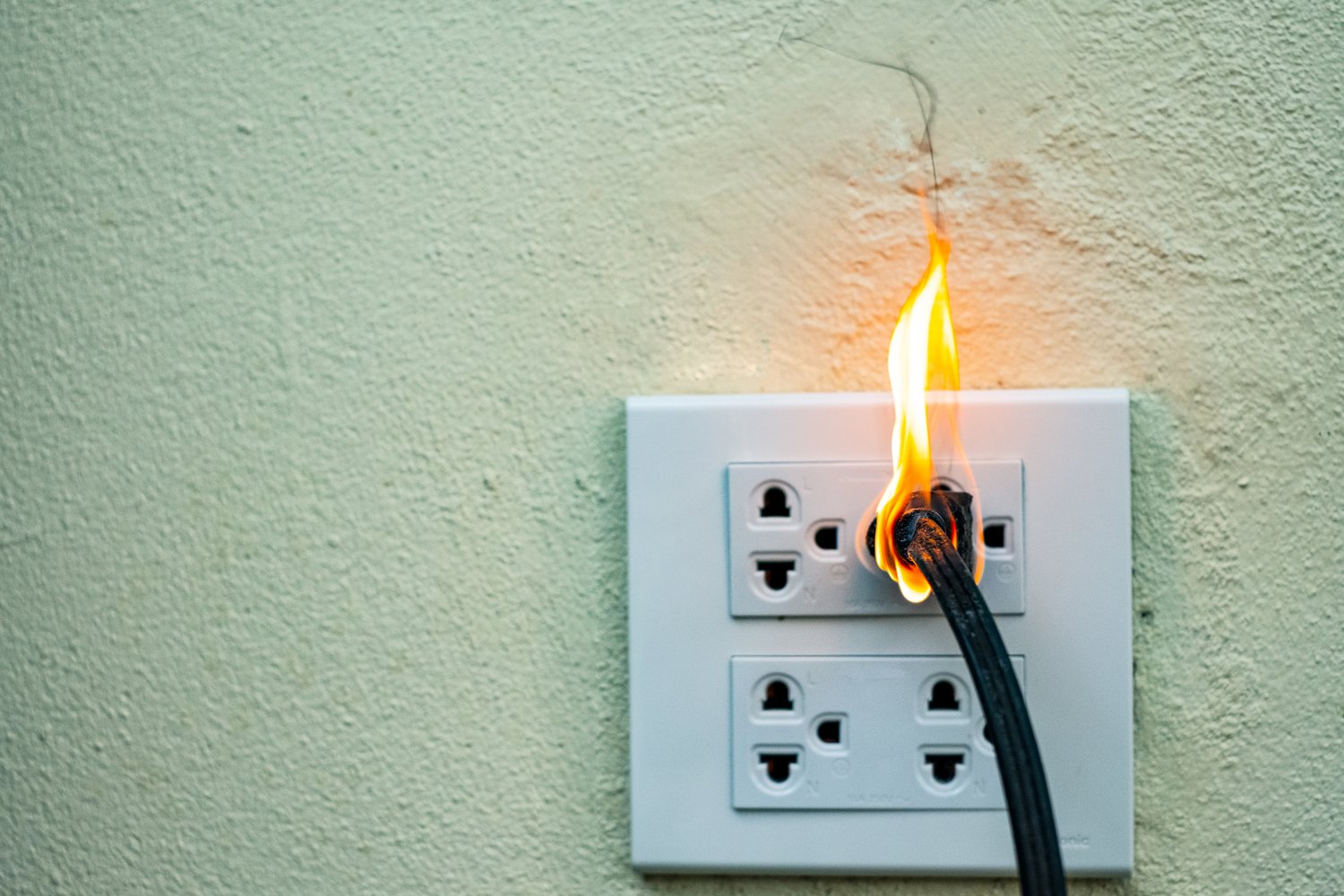Imagine reaching out to plug in your phone, only to recoil as the outlet feels unexpectedly hot. A hot electrical outlet isn’t just uncomfortable; it’s a potential fire hazard lurking in the walls of your home. Understanding why this happens and recognizing the warning signs is essential for your safety and peace of mind.
- Discover the most common causes behind a hot electrical outlet, such as overloaded circuits or faulty wiring, that could pose a serious threat to your home.
- Identify if your home circuits are being overloaded and learn practical steps to prevent and manage this electrical strain.
- Look for tell-tale warning signs, like odd noises or burning smells, that indicate deeper electrical issues needing immediate attention.
By the end of this article, you’ll have a roadmap to address these concerns, empowering you to create a safer living environment. Equipped with clear insights and actionable advice, you’ll be prepared to handle these electrical hazards effectively.
Common Causes Behind a Hot Electrical Outlet: Why is My Electrical Outlet Hot to Touch? Danger Signs You Shouldn’t Ignore
Understanding the reasons behind a hot electrical outlet is crucial for maintaining home safety. One of the most frequent causes is overloaded circuits. This occurs when too many devices draw power from a single circuit, causing it to overheat. A lack of sufficient electrical supply can lead to an increased risk of fire.
Another potential reason is faulty wiring. Old, damaged, or improperly installed wires can generate excessive heat. Over time, connections might loosen, or insulation could degrade, creating unsafe conditions.
Loose plugs also contribute to overheating. If a plug doesn’t fit securely into an outlet, it can cause sparking and increased temperature. It’s important to ensure that all electrical connections are tight and secure to prevent such hazards.
Recognizing these causes early can prevent damage to your home and appliances. If you notice any issues, it’s advisable to address them promptly to avoid potential dangers.
Identifying Overloaded Circuits in Your Home
Identifying and managing overloaded circuits is key to preventing hot electrical outlets. A common sign of an overloaded circuit is frequent tripping of your circuit breakers or fuses. This occurs because the system is designed to cut off power when it’s overburdened.
To determine if your circuits are overloaded, consider the number and types of devices connected to a single outlet. High-power appliances, such as microwaves and space heaters, typically consume more energy and should not be used simultaneously on the same circuit.
The layout of power distribution in your home matters. Ensure that circuits are evenly distributed to balance the electrical load. Utilizing additional circuits or rearranging appliances can help alleviate stress on any single circuit.
For a proactive approach, conduct regular checks of your electrical system. This ensures components remain in good condition and function efficiently, ultimately improving safety and preventing potential overheating.
Warning Signs and Prevention: Why is My Electrical Outlet Hot to Touch? Danger Signs You Shouldn’t Ignore
Realizing that an electrical outlet feels hot to the touch can be alarming, and it’s essential to act promptly to prevent potential hazards. Several warning signs indicate possible electrical issues that could lead to a hot outlet. Being aware of these signs, such as strange noises or unusual odors, will help safeguard your home.
Identifying Warning Signs
One of the most notable warning signs is a burning smell emanating from the outlet or the surrounding area. This odor may indicate that the wiring insulation is overheating, posing a serious fire risk. Additionally, hearing crackling or buzzing sounds from the outlet can signal a loose or damaged wire, which needs immediate attention.
Another red flag is if you observe scorch marks or discoloration on the faceplate of the outlet. This could be due to excessive heat generated from electrical arcing, which requires urgent intervention. Don’t overlook if the outlet sparks when you plug in a device; it might be a sign of improper wiring or other underlying electrical problems.
Prevention Tips
Preventing electrical outlet issues begins with regular inspection and maintenance of your home’s wiring system. Here are some key steps to keep your electrical system safe:
Ensure that the electrical outlets are not overloaded with devices drawing more power than intended. Consider using a power strip with surge protection to manage multiple devices safely.
Frequently inspect your outlets for signs of wear and tear. If you notice any of the aforementioned warning signs, it’s crucial to consult a professional electrician. They can perform a comprehensive check-up to determine if any immediate repairs are necessary.
In areas prone to moisture, such as bathrooms and kitchens, ensure that you install Ground Fault Circuit Interrupter (GFCI) outlets. These outlets help prevent electrical shocks and reduce the risk of overheating by cutting off power when a fault is detected.
By staying vigilant and recognizing the early signs of electrical issues, you can significantly reduce the risks of fire and electrical hazards in your home. Consistent monitoring and timely professional help are paramount to maintaining a safe living environment.
Frequently Asked Questions About Hot Electrical Outlets
What should I do if my electrical outlet is hot?
Turn off power to the outlet and consult an electrician.
Can I fix a hot outlet myself?
It’s best to avoid DIY repairs and contact a professional to ensure safety.
What are the risks of ignoring a hot outlet?
Ignoring can lead to electrical fires or appliance damage.
Is a warm outlet always dangerous?
Not always, but a rapidly heating outlet can indicate serious issues.
Could faulty appliances cause my outlet to overheat?
Yes, faulty appliances can overload circuits and cause overheating.





